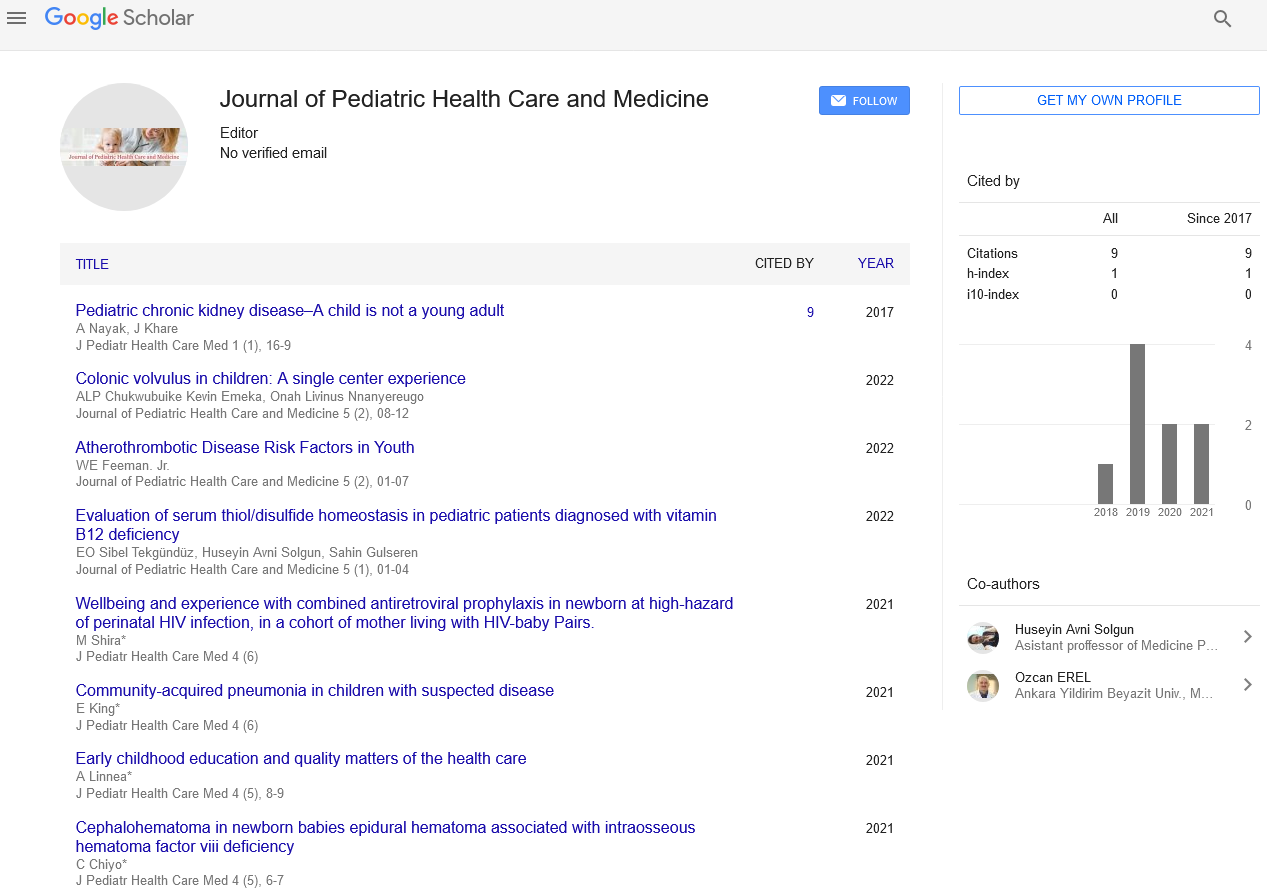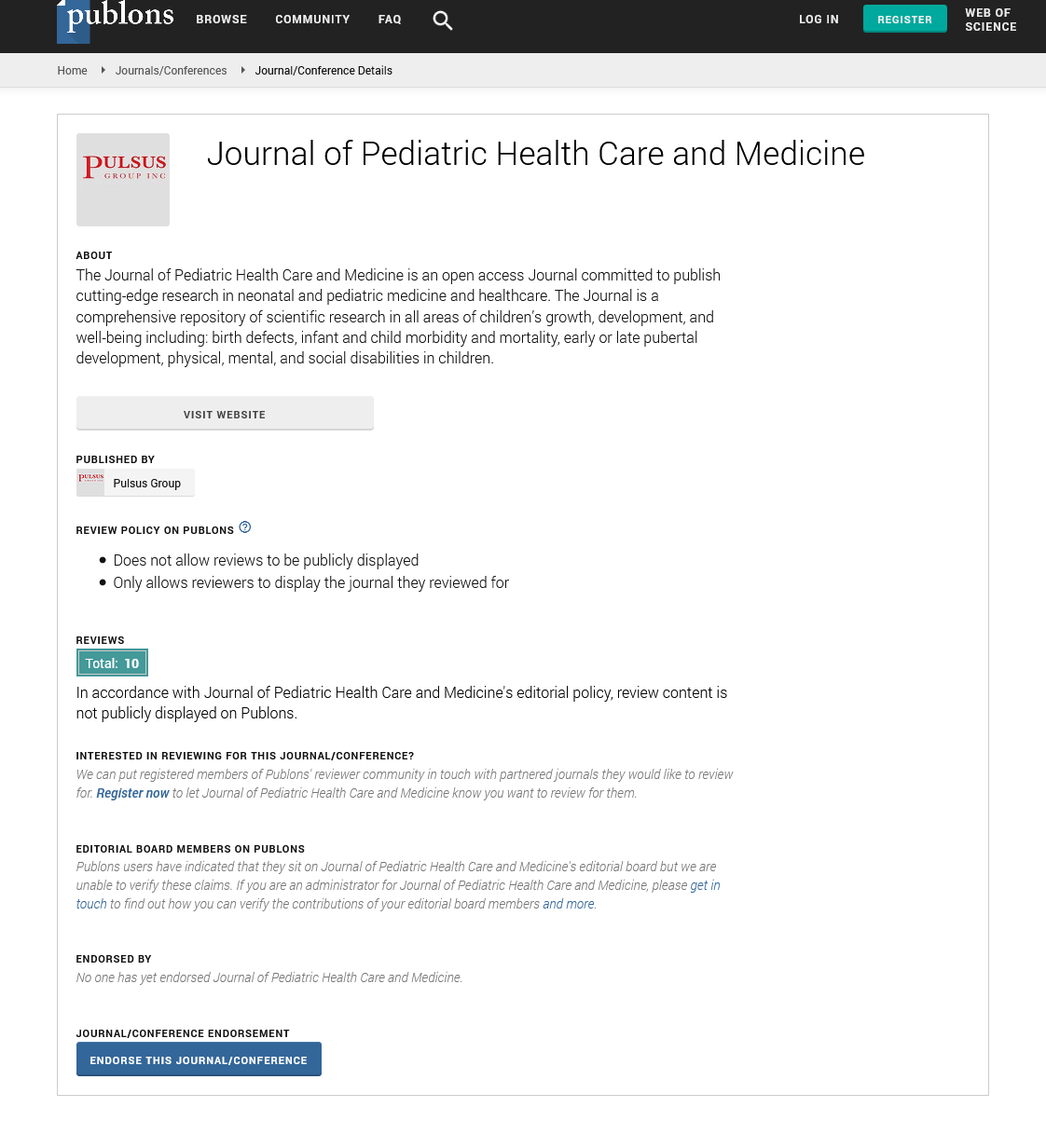
Sign up for email alert when new content gets added: Sign up
Abstract
General Pediatrics 2017: Mullerian agenesis diagnosis and management- Shawky Z A Badawy- SUNY Upstate Medical University
Author(s): Shawky Z A BadawyMullerian agenesis is an important cause of primary amenorrhea with normal thelarche and adrenarche. Hormonal studies including gonadotropins, estradiol, progesterone, thyroid hormones, prolactin and testosterone levels are normal. Management of these cases requires attention to the psychological aspect, sexual and reproductive issues. Creation of a vagina can be achieved either by use of dilatators or surgery. For reproduction, the patient benefits from advances in reproductive technology, and in the future uterine transplantation. Key Words: Mullerian agenesis, Imperforate hymen, vaginal septum, Androgen In sensitivity syndrome. Introduction Mullerian Agenesis occurs in about 1 in 4,000 to 1 in 10,000 women. The main manifestation and presentation to the reproductive endocrinologist or gynecologist is usually primary amenorrhea with normal development of secondary sex characteristics. Mullerian Agenesis is the most important cause of primary amenorrhea following gonadal dysgenesis. When the patient and the families are presented with such diagnosis, it leads to many questions related to human reproduction and leads to some degree of emotional disturbances and maybe depression because of Mullerian Agenesis; these patients have some degree of sexual dysfunction as well as inability to achieve pregnancy.
The treating physician must take all these factors into consideration and be able to explain what medicine treatment modalities could be offered to them at the present time with the advances in reproductive technology. Embryology and Development of the Uterus and Vagina The uterus and vagina develop from a pair of ducts known as Mullerian or paramesonephric ducts. These ducts start as an invagination of coelomic epithelim lateral to the gonadal ridge between the 4th and 6th week after fertilization. Fusion of the distal ends of these ducts occurs at the 7th week of pregnancy. The distal end of the fused ducts is known as a mullerian tubercle and that fuses with the posterior wall of the urogenital sinus. Proliferation of cells from the urogenital sinus leads to the formation of the vaginal plate. Recanalisation of the vaginal plate results in the formation of the vagina. Communication between the vaginal bulb and the urogenital sinus results in the vaginal orifice and hymen. The septum between the fused mullerian ducts starts to degenerate at the 13th week of pregnancy and completely disappears by the 20th week of pregnancy. As a result of this process we have complete development of the uterus, cervix and vagina. The upper part of the paramesonephic ducts remains separate and that will be the fallopian tubes.
Failure of the mullerian ducts to develop has two theories.
1) Activation of mullerian inhibitory factor. There is no evidence that www.innovationinfo.org ISSN: 2581-7493 16 there is a mullerian inhibiting factor in a woman since this factor develops from Sertoli cells in XY individuals.
2) The other theory is failure of the enzymes removed from certain genes that are necessary for the development of the female reproductive system and this includes homeobox gene 11, 12 and 13.
Differential Diagnosis Imperforate Hymen: Patients with imperforate hymen present as teenage population girls with normal secondary sexual development. They might present with regular cyclic cramping sensation for a few days each month. Pelvic examination reveals imperforate hymen with blood accumulating above that level of the vagina and if this is the case it has been going on for quite some time, the vagina could be distended with much blood to form a pelvic abdominal mass seen by the sonogram. The treatment of this condition is incision of the hymen and the evacuation of the blood and after that, reconstructs the hymen. Usually, the patient and a member of her family are present in the office during the evaluation. The procedure is explained in detail with proper diagrams and we must be sure that they understand the diagnosis and its management. The procedure is performed in the operating room under general anesthesia so there will be no pain. Follow up visits to the office confirms that the patients are happy and having their menstrual periods without any discomfort that they experienced before surgery. Transverse Vaginal Septum: This occurs mostly between the upper third and lower two-thirds of the vagina. If it is a complete septum, it will lead to the accumulation of blood above its level and these cases would be diagnosed by a sonogram of the pelvis when you find the distended upper vagina and maybe the uterus. The treatment is excision of the vaginal septum.
Androgen In sensitivity syndrome: These are XY karyotype females that had mutation in the androgen receptor gene and therefore they do not respond to the androgens. The gonads are male gonads and the testosterone level is as high as a male between 300 and 1,000 nanogram/ dl. However, these patients clinically will have no hair growth, they have normal breast development, normal height, and they have mullerian agenesis because the gonads which are testicles secrete mullerian inhibiting factor and therefore they do not have a uterus, and they do not have a vagina. The management in these cases is gonadectomy to prevent an occurrence of malignancies of the gonads. Gonadectomy is done between ages 17-19 years old to allow for normal puberty to develop. Construction of a vagina is the next line of treatment and of course, hormone replacement therapy for maintenance treatment.
Bottom Note: This work is partly presented at 14th World Congress on General Pediatrics & Adolescent medicine on September 25-27, 2017 Chicago, Illinois, USA





